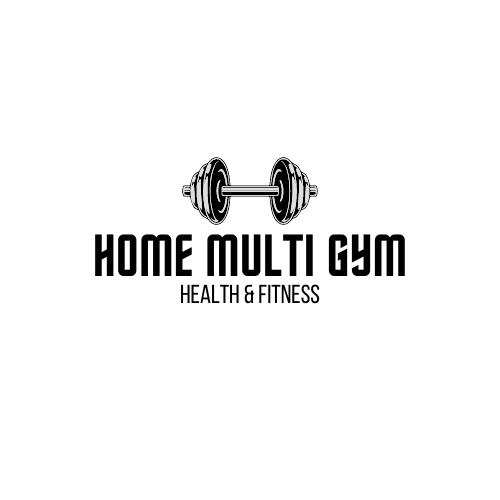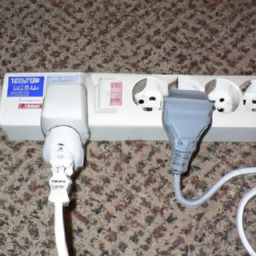Are you considering setting up a home multi-gym but unsure about the power requirements? Well, you’ve come to the right place! In this article, we will delve into the world of home multi-gyms and provide you with all the information you need to know about their power requirements. Whether you’re a fitness enthusiast or just looking to stay in shape, understanding the power needs of this equipment is essential for a smooth and hassle-free workout experience. So, let’s get started and discover everything you need to know about the power requirements for a home multi-gym.
Curious to know if a home multi-gym will fit into your existing power setup? Wondering if you’ll need any special power outlets or dedicated circuits? Don’t fret! In our comprehensive article, we will discuss in detail the power requirements for a home multi-gym, including voltage, current, and optimal power outlets. We will also cover any additional considerations and tips to ensure you set up your home gym safely and efficiently. So, whether you’re a beginner or an experienced gym-goer, stay tuned to learn more about the power requirements for a home multi-gym and make an informed decision for your fitness journey.
Overview
Understanding power requirements for a home multi-gym
When setting up a home multi-gym, it is important to consider the power requirements of the equipment. Power supply plays a crucial role in ensuring the smooth operation of the multi-gym, avoiding potential risks or damage, and optimizing its performance. In this article, we will explore the different types of power supplies available for home multi-gyms, their advantages and limitations, and how to select the most suitable option for your specific needs.
Importance of Power Supply
Ensuring smooth operation of the multi-gym
A reliable and consistent power supply is essential for the proper functioning of a home multi-gym. Without a stable power source, the equipment may not perform optimally or may even fail to operate at all. This can lead to frustration and hinder your fitness routine.
Avoiding potential risks or damage
An insufficient or improper power supply can pose potential risks not only to the equipment but also to the user. Inadequate power may cause the multi-gym to malfunction, which can result in accidents or injuries. It is therefore crucial to understand the power requirements and ensure a safe and reliable power supply.
Optimizing performance of the equipment
A well-maintained and properly powered multi-gym can provide you with the best workout experience. It allows you to make the most of the equipment’s features, such as adjustable resistance levels, programmed workouts, and monitoring capabilities. By ensuring the correct power supply, you can optimize the performance of your home multi-gym and achieve your fitness goals efficiently.
Types of Power Supply
Battery-operated multi-gyms
Some multi-gyms operate on battery power, making them portable and easy to use without the need for an external power source. Battery-operated multi-gyms offer flexibility in terms of placement and mobility, as they do not require a direct AC power supply. However, they have their limitations, which we will discuss further.
Direct AC power supply
Most home multi-gyms are designed to be powered by direct AC power supply from a wall outlet. This provides a continuous and reliable source of power, eliminating the need to replace or recharge batteries. While this option doesn’t offer the same portability as battery-operated multi-gyms, it ensures a consistent power supply for uninterrupted workouts.
DC power supply with adapter
Some multi-gyms can be powered by DC power supply using an adapter. This option combines the convenience of a direct power supply with the flexibility of battery-operated multi-gyms. The adapter converts the AC voltage from the wall outlet to DC voltage suitable for the equipment. This allows you to utilize a direct power supply while maintaining the mobility of the multi-gym.
Battery-operated Multi-Gyms
Advantages of battery-powered multi-gyms
Battery-operated multi-gyms offer several advantages. They do not require a direct AC power supply, allowing you to place them anywhere in your home without restrictions. This portability is especially beneficial if you have limited access to power outlets or need to move the multi-gym around frequently. Additionally, battery-operated multi-gyms are not affected by power outages, ensuring uninterrupted workouts.
Limitations of battery-powered multi-gyms
One major limitation of battery-operated multi-gyms is the need to regularly replace or recharge the batteries. This ongoing maintenance can be inconvenient and may interrupt your workout routine. Additionally, battery-operated multi-gyms may have limited power and performance capabilities compared to those powered by direct AC supply.
Understanding battery requirements
When using a battery-operated multi-gym, it is essential to understand the battery requirements. Different multi-gyms may have specific battery specifications, such as the type and size of batteries required. It is crucial to follow the manufacturer’s guidelines and ensure you have the appropriate batteries on hand to power your equipment.
Direct AC Power Supply
Benefits of direct AC power supply
Using a direct AC power supply for your home multi-gym offers several advantages. Firstly, it eliminates the need to replace or recharge batteries, saving you time and effort. A direct power supply also provides a consistent power source, ensuring uninterrupted performance during your workouts. Additionally, direct AC power supply allows the multi-gym to utilize its full potential, including features that may not be available with battery-operated options.
Considerations for proper installation
When connecting your home multi-gym to a direct AC power supply, it is crucial to ensure proper installation. This may involve plugging the equipment into a grounded wall outlet or using an extension cord if necessary. Proper installation not only ensures a reliable power supply but also reduces the risk of electrical malfunctions or accidents.
Ensuring compatibility with local voltage standards
Before connecting your home multi-gym to a direct AC power supply, ensure that it is compatible with the local voltage standards. Voltage requirements may vary depending on your geographical location. Using a voltage converter or transformer may be necessary if the equipment is designed for a different voltage than your local power supply.
DC Power Supply with Adapter
Understanding the role of DC power supply with adapter
DC power supply with an adapter allows you to power your multi-gym with a direct power source while still maintaining the convenience of mobility. The adapter converts the AC power from the wall outlet into DC power, which is then used to operate the multi-gym. This option provides flexibility and can be beneficial if you prefer a direct power supply but also need to move your equipment around.
Benefits of using DC power supply
Using a DC power supply with an adapter offers the advantage of a reliable and continuous power source. It eliminates the need for batteries and ensures uninterrupted workouts. Additionally, this option allows you to enjoy the benefits of a direct power supply while still maintaining the mobility of your multi-gym.
Selecting the right adapter for the multi-gym
When using a DC power supply with an adapter, it is important to select the right adapter for your multi-gym. The adapter should match the voltage and power requirements of your equipment. It is recommended to consult the manufacturer’s guidelines or seek professional advice to ensure compatibility and prevent any potential damage to the multi-gym.
Power Consumption of Multi-Gyms
Factors affecting power consumption
The power consumption of a home multi-gym can vary depending on several factors. These may include the size and type of the equipment, the resistance settings being used, the duration and intensity of workouts, and the additional features such as built-in displays or electronic controls. Understanding these factors can help you estimate the power requirements and ensure you have an appropriate power supply.
Optimizing power usage
To optimize power usage, you can follow certain practices such as turning off the multi-gym when not in use, adjusting the resistance settings to minimize power consumption, and avoiding excessive use of additional features that may consume more power. These simple steps can help reduce energy consumption and ultimately save on electricity costs.
Calculating energy costs
To calculate the energy costs associated with using a home multi-gym, you can multiply the power consumption of the equipment (in watts) by the number of hours you use it per day. This will give you the daily energy consumption in watt-hours (Wh). To convert this to kilowatt-hours (kWh), divide the watt-hours by 1000. You can then multiply the kilowatt-hours by the cost per kilowatt-hour charged by your utility company to determine the daily energy cost.
Safety Measures
Proper grounding and circuit protection
Ensuring proper grounding and circuit protection is essential for the safe operation of your home multi-gym. This includes using grounded outlets and surge protectors to prevent electrical malfunctions or damage. Regularly inspecting and maintaining the power cords and connections is also important to minimize the risk of accidents or injuries.
Regular maintenance and inspections
Performing regular maintenance and inspections on your multi-gym can help identify any potential power-related issues. This may include checking for loose connections, frayed wires, or any signs of overheating. It is recommended to follow the manufacturer’s guidelines for maintenance and schedule periodic inspections to ensure the equipment is in good working condition.
Following manufacturer’s guidelines
To ensure safety and optimal performance, it is crucial to follow the manufacturer’s guidelines when it comes to power requirements and operating procedures. These guidelines typically include information on the recommended power supply, installation instructions, and any specific precautions to be taken. Adhering to these guidelines will help prevent accidents, protect the equipment, and ensure a long lifespan for your home multi-gym.
Additional Considerations
Backup power options
Having a backup power option can be beneficial in case of power outages or emergencies. This may involve using a generator or an uninterruptible power supply (UPS) to provide temporary power to the multi-gym. Considering your specific needs and the likelihood of power disruptions in your area can help you determine if a backup power solution is necessary.
Compatibility with alternative power sources
If you have access to alternative power sources such as solar panels or wind turbines, you may consider integrating your home multi-gym with these renewable energy systems. This not only reduces reliance on conventional power sources but also aligns with a sustainable and eco-friendly lifestyle.
Integration with smart home systems
Some home multi-gyms offer integration with smart home systems, allowing you to control and monitor the equipment remotely through smartphones or voice assistants. This feature can enhance convenience and provide additional functionality. If you are interested in smart home integration, ensure that your multi-gym is compatible with the desired smart home platform.
Conclusion
Ensuring a reliable power supply for your home multi-gym is crucial for optimal performance and safety. Understanding the different types of power supply options available helps you make an informed decision that suits your specific needs. Consider factors such as portability, convenience, power consumption, and safety measures when selecting the most suitable solution for your home multi-gym. By adhering to the power requirements and following proper installation and maintenance practices, you can enjoy a hassle-free workout experience and achieve your fitness goals effectively.

